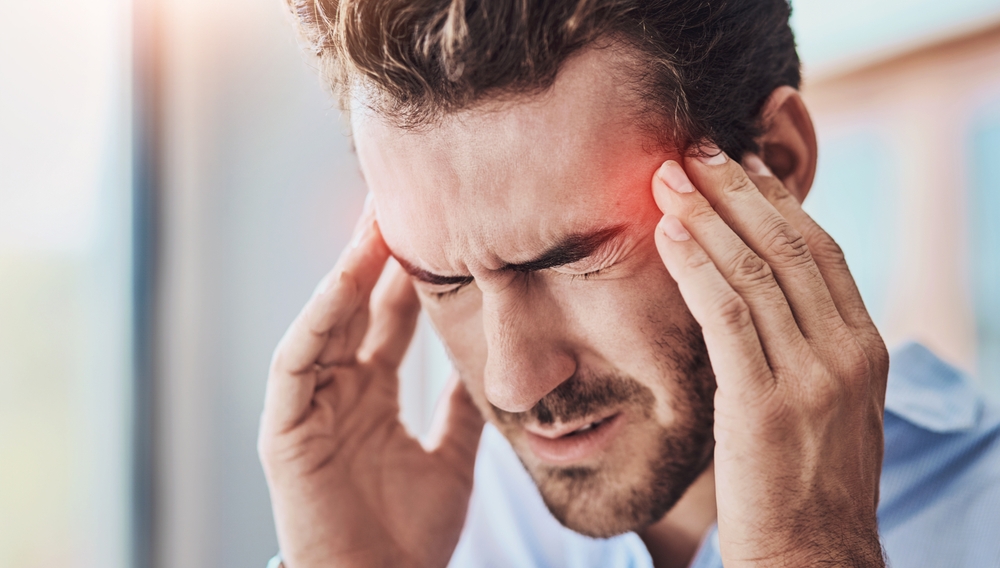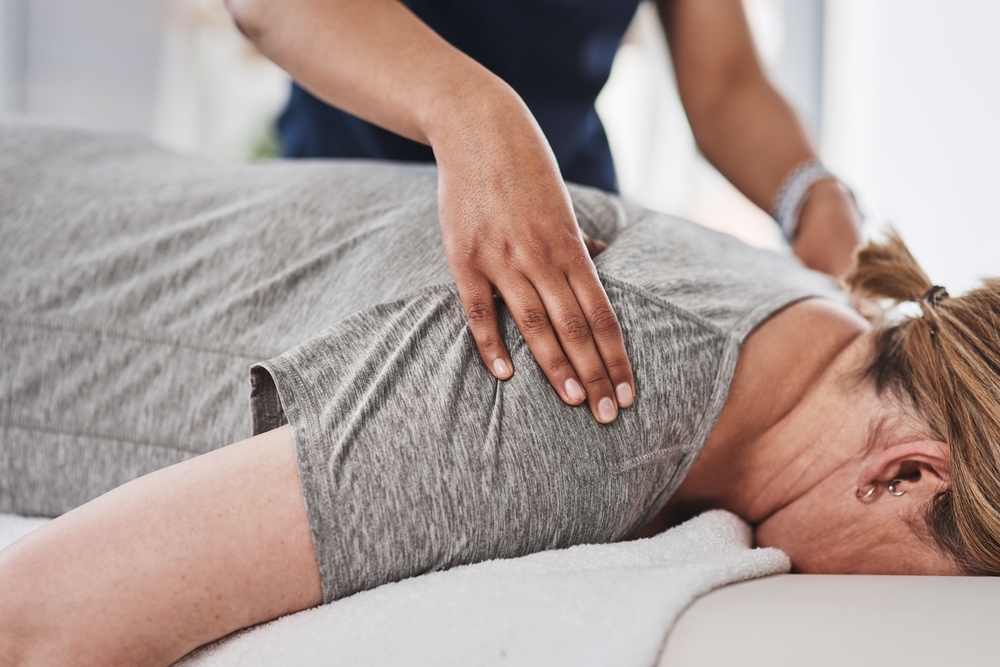Migraines are not just a headache – they are a neurological condition that can significantly impact daily life. Affecting roughly 1 in 5 Australians (Australian Migraine Foundation, 2020), migraines can cause debilitating symptoms such as severe headache, nausea, and sensitivity to light and sound. If you suffer from migraines, you know how they can disrupt everything from work to family life. However, a growing body of evidence suggests that physiotherapy can offer significant relief for those dealing with migraines.
This blog explores how physiotherapy for migraine works and how specific treatments such as posture correction, neck exercises, and tension relief techniques can alleviate the symptoms.

What are migraines?
Migraines are recurrent and often intense headaches, typically accompanied by symptoms like nausea, vomiting, and extreme sensitivity to light or sound (Headache Classification Committee of the International Headache Society, 2018). Though the exact cause remains uncertain, migraines are thought to be a result of abnormal brain activity, which affects nerve signals, chemicals, and blood vessels in the brain (Schwartz, 2019). Triggers vary from person to person, with common ones including stress, hormonal changes, and poor posture.
While medication is the traditional treatment for migraines, many people are seeking alternatives due to the side effects associated with long-term use. Physiotherapy is one such option that has shown promise in reducing both the frequency and severity of migraines.
Using physiotherapy for migraine treatment
Physiotherapists don’t directly treat migraines but address contributing factors that can worsen symptoms. A physiotherapy treatment plan might focus on correcting posture, reducing muscle tension, improving neck mobility, and managing stress. Here’s how each of these factors plays a role in migraine management.
1. Posture correction
Poor posture is a significant contributor to the development and exacerbation of migraines (D’Andrea et al., 2016). Many people, particularly those who spend long hours at desks or in front of screens, develop postural imbalances that lead to muscle strain in the neck and shoulders. This can cause tension that triggers migraine episodes. Physiotherapists work with patients to assess and correct postural imbalances, aiming to reduce stress on the neck and upper back muscles, which can help prevent migraine attacks (O’Reilly, 2019).
Through posture correction techniques, physiotherapists can help you improve your alignment and reduce the muscle strain that contributes to headaches. Simple lifestyle changes such as sitting upright and adjusting your desk setup can also make a huge difference over time.
2. Neck exercises for migraine relief
Tension in the neck and upper back muscles is another common factor in migraine development. Physiotherapists teach targeted neck strengthening exercises designed to improve the strength, flexibility, and mobility of these muscles. Research has shown that a combination of strengthening and stretching exercises for the neck can reduce the frequency and intensity of migraines (Cohen et al., 2020).
Some exercises might include:
- Neck stretches: These can help release tight muscles and improve the range of motion.
- Strengthening exercises: Focusing on strengthening the muscles that support the neck and upper back.
- Postural exercises: To promote better alignment throughout the day, reducing the risk of tension buildup.
When combined with other treatments, neck exercises can be a key part of a comprehensive physiotherapy plan to address migraine symptoms.

3. Tension relief techniques
Muscle tension is a major cause of discomfort in migraine sufferers. Physiotherapists use a range of techniques to help alleviate this tension and relieve symptoms. Some common approaches include:
- Massage therapy: Physiotherapists use targeted massage techniques to release tight muscles and trigger points. This can help alleviate the pressure that causes headaches (D’Andrea et al., 2016).
- Dry needling: This involves inserting fine needles into tight muscle spots, promoting relaxation and improved blood flow. Studies have found that dry needling can reduce headache severity in patients with tension-type headaches (Bracco et al., 2019).
- Myofascial release: This technique targets the fascia, the connective tissue surrounding muscles, to release tension and improve mobility.
- Heat or cold therapy: Applying heat or cold to specific areas can help reduce inflammation and stiffness, providing immediate relief from muscle tightness.
These therapies not only provide short-term relief but can also contribute to long-term improvements by addressing the root causes of tension and muscle tightness that often lead to migraines.
4. Stress management and relaxation techniques
For many people, stress is a key trigger for migraines (Buse et al., 2019). Physiotherapists can teach techniques such as relaxation exercises, deep breathing, and mindfulness practices to help manage stress. These techniques can reduce muscle tension and promote a more relaxed state, potentially preventing migraines from occurring.
By learning how to reduce stress effectively, you can avoid one of the most common triggers of migraines and experience fewer and less severe episodes.

Collaboration with other health professionals
At Lifecare, we believe in a team-based approach to migraine management. Alongside physiotherapists, our team includes exercise physiologists, myotherapists, sports medicine physicians, and dietitians, all of whom can contribute to a holistic treatment plan.
Exercise physiologists design personalised exercise programs to enhance physical health, which can positively influence migraine management. Regular physical activity has been shown to reduce the frequency of migraines by improving circulation and relieving muscle tension (Zhao et al., 2021).
Myotherapists specialise in manual therapies that focus on muscle function and tension relief. Their treatments, including massage and dry needling, can target muscle tightness and help prevent migraines.
Sport and exercise medicine physicians assess and diagnose underlying medical issues that could contribute to migraines and provide additional treatment options.
Dietitians help identify food triggers and create personalised nutrition plans to reduce the frequency of migraines. Studies have shown that dietary factors can play a significant role in migraine management (Kirthi et al., 2019).
This multi-disciplinary approach provides comprehensive care that targets both the physical and lifestyle factors contributing to your migraines.
How diet and nutrition can play a role in migraine management
Certain foods and beverages are known to trigger migraines. Common culprits include caffeine, alcohol, processed foods, and foods high in MSG (Kirthi et al., 2019). Working with a dietitian can help identify potential food triggers and create a nutrition plan that supports migraine relief.
Additionally, maintaining a healthy, balanced diet can support overall health, which may reduce the severity and frequency of migraines.

Is physiotherapy right for you?
If you’ve been suffering from migraines and haven’t found relief with traditional treatments, physiotherapy for migraine headaches could offer you a new solution. By addressing the root causes of migraine symptoms, such as poor posture, muscle tension, and stress, physiotherapy provides a holistic and effective treatment option.
At Lifecare, we offer a comprehensive, multi-disciplinary approach to treating migraines. Whether you need posture correction, targeted neck exercises, or relaxation techniques, our team of experts is here to help.
Start your journey to migraine relief
Migraines don’t have to take over your life. Physiotherapy offers a practical and effective approach to managing migraines by addressing the physical triggers of your symptoms. Through posture correction, neck exercises, tension relief, and stress management, physiotherapy for migraine can reduce the frequency and severity of migraines, leading to a better quality of life.
Take the first step toward relief by getting in touch with your closest Lifecare clinic today and discover how physiotherapy can help you take control of your migraines.
Written by Tano Tandaro, Physiotherapist – Lifecare Backfocus Diamond Creek
Tano is an AHPRA registered physiotherapist with a strong background in human anatomy and physiology. Having managed athletic conditions in a sports injury clinic, he prides himself on accurately diagnosing and treating the root cause of symptoms to help keep your issues away permanently. Tano can be found at the Lifecare Backfocus Diamond Creek, where he works alongside a dedicated team to ensure optimal recovery for all patients.
References
Bracco, D., Scannell, K., C Zafir, K. (2019). Efficacy of dry needling for tension-type headache: A systematic review. *Journal of Bodywork and Movement Therapies, 23*(3), 557-564. https://doi.org/10.1016/j.jbmt.2018.08.004
Buse, D. C., Greisman, J. M., C Lipton, R. B. (2019). Stress and migraine: A review of the literature. *Headache, 59*(7), 1043-1052. https://doi.org/10.1111/head.13542
Cohen, S. P., C Bhatia, A. (2020). Non-pharmacological treatments for chronic migraine. *Current Treatment Options in Neurology, 22*(5), 15-22. https://doi.org/10.1007/s11940-020-0643-0
D’Andrea, S., Borghi, A., C Cazzato, G. (2016). The role of posture in the management of migraines. *Journal of Neurological Sciences, 361*(1), 53-60. https://doi.org/10.1016/j.jns.2016.01.040
Headache Classification Committee of the International Headache Society. (2018).
*The international classification of headache disorders* (3rd ed.). Cephalalgia, 38(1), 1-
211. https://doi.org/10.1177/0333102417732144
Kirthi, V., Sharma, S., C Rao, S. (2019). Role of diet in migraine prevention: A review.
*Nutritional Neuroscience, 22*(6), 397-408. https://doi.org/10.1080/1028415X.2018.1458926
O’Reilly, M., C O’Shea, F. (2019). Posture and headache: A review. *Musculoskeletal
Science and Practice, 40*, 66-72. https://doi.org/10.1016/j.msksp.2019.04.006
Schwartz, L. (2019). The pathophysiology of migraine: An overview. *Neurology Research International, 2019*, 1-10. https://doi.org/10.1155/2019/7474298
Zhao, L., Liu, Z., C Zhong, Z. (2021). Exercise as an effective treatment for migraine: A systematic review. *Clinical Journal of Pain, 37*(1), 12-23. https://doi.org/10.1097/AJP.0000000000000891

